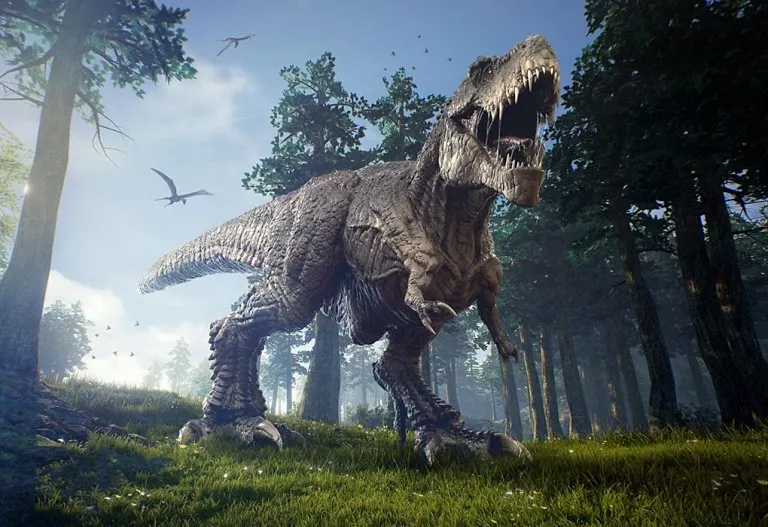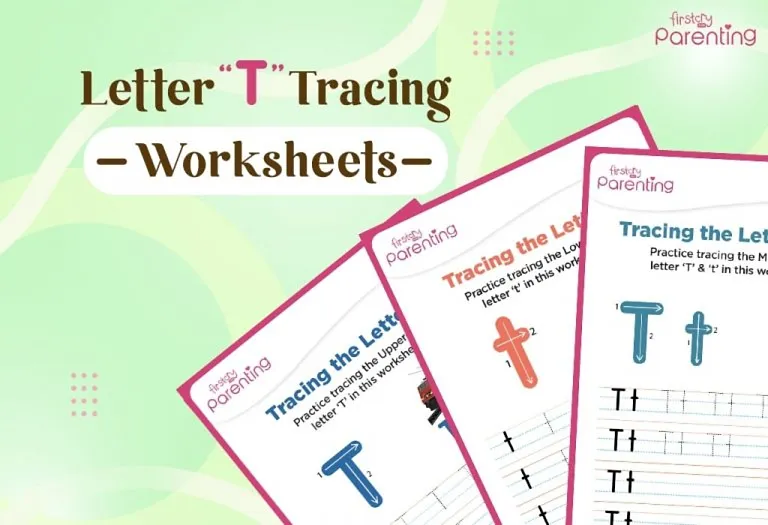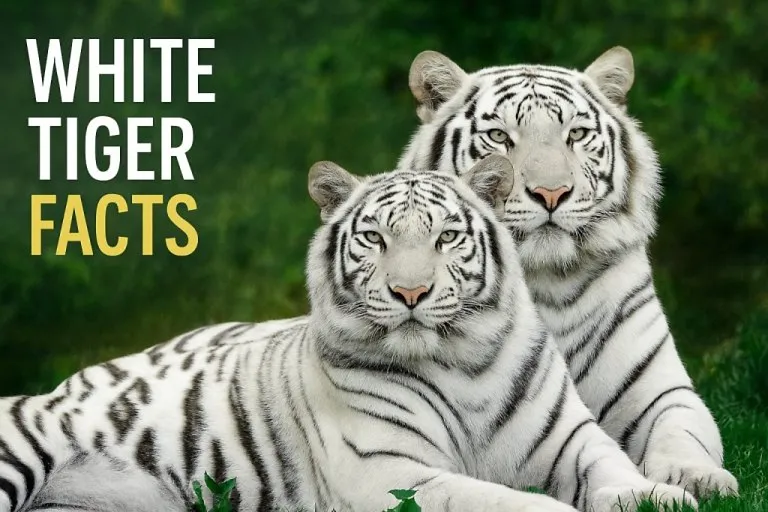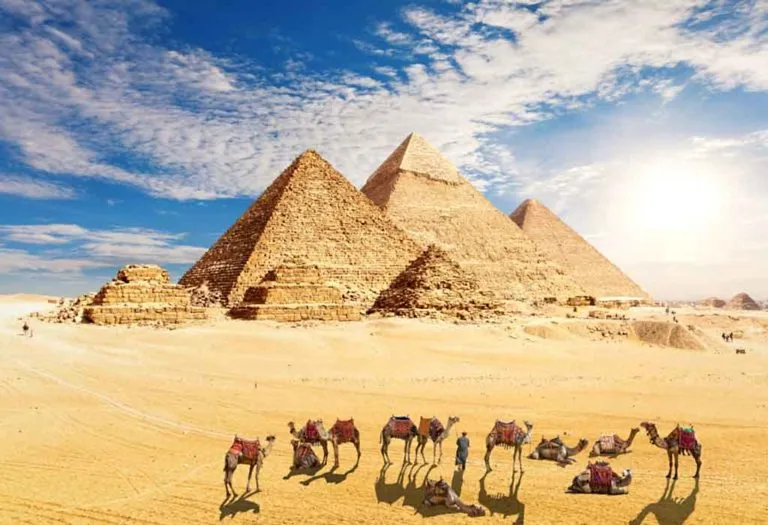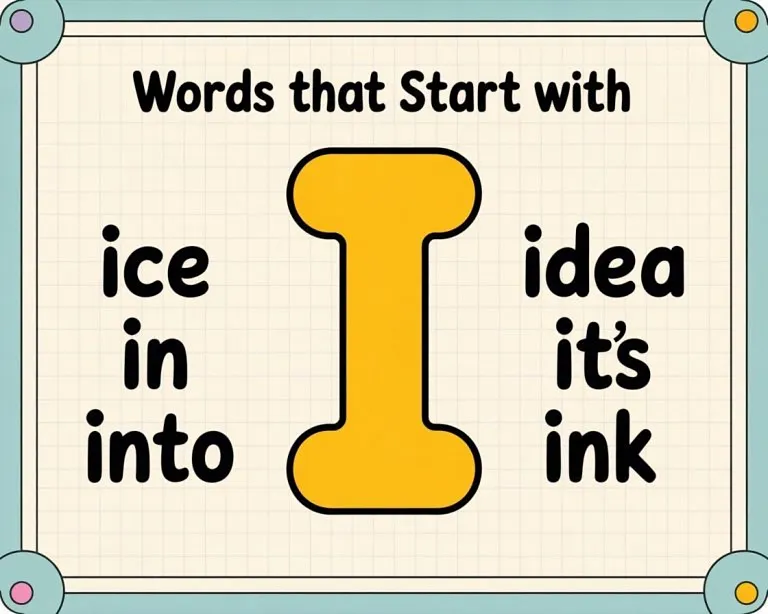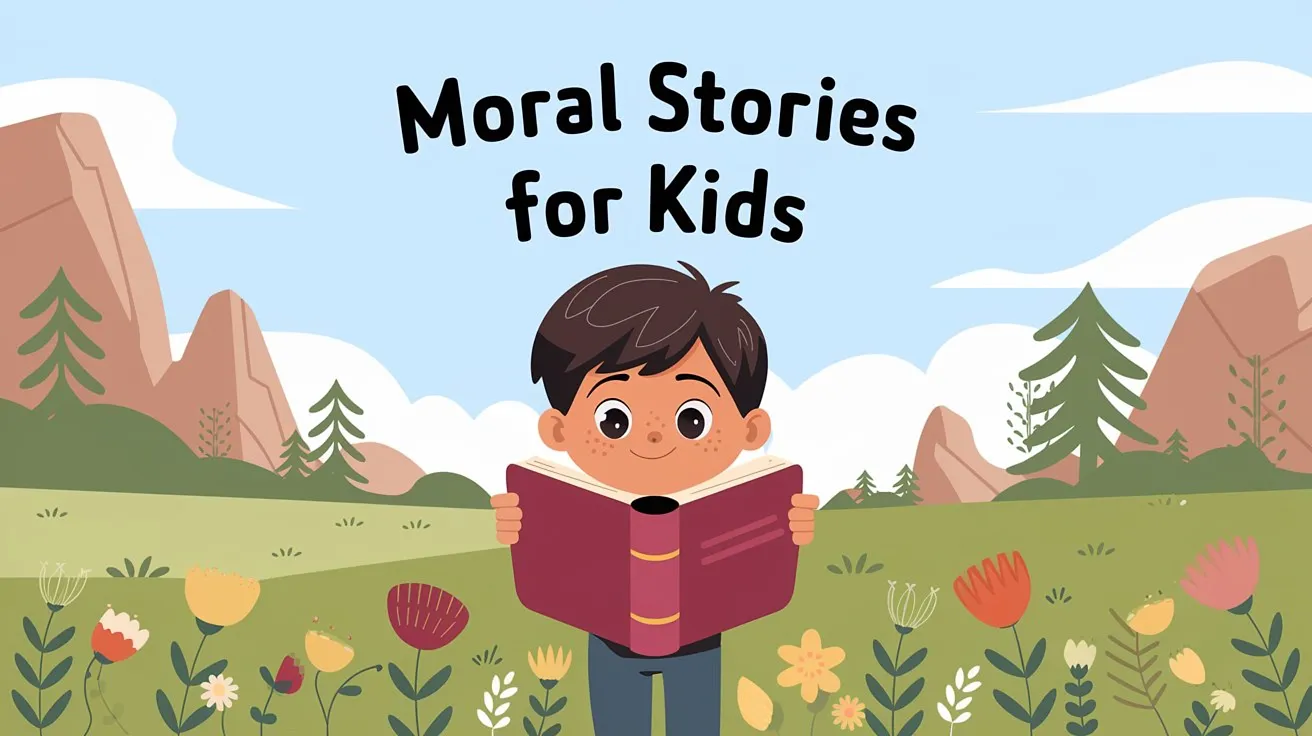Fun and Interesting Dinosaur Facts for Kids
- What Is a Dinosaur?
- Where Did the Word “Dinosaur” Come From and What Does it Mean?
- Evolution of a Dinosaur
- How Many Types of Dinosaurs Existed?
- What Are the Key Characteristics of Dinosaurs?
- In Which Era Did Dinosaurs Live?
- How and Why Did Dinosaur Become Extinct?
- Fun Facts About Dinosaurs for Kids
- FAQs
Did you know that dinosaurs lived a very, very long time ago, even before people were around? These giant (and sometimes tiny!) creatures walked on Earth millions of years ago. Some had big teeth, some had long necks, and some could even fly! Even though dinosaurs aren’t around today, we can still learn lots of cool things about them from their bones, called fossils.
Children are all extremely curious from a young age, and most of them are sure to ask about the mysterious creatures called ‘dinosaurs’. Although we know that dinosaurs really did exist, they don’t anymore and it’s up to us to help kids understand what they were like and why they’re no longer here.
Let’s take a fun journey back in time and explore some amazing dinosaur facts for kids that can help you answer those big dino questions with ease!
What Is a Dinosaur?
Dinosaurs were some of the largest creatures on the earth and existed long before humans started to evolve here. They are a group of creatures which had large variety within themselves – some dinosaurs could fly, and some were larger than elephants we have now. They ruled the earth mainly in the Jurassic Period. Dinosaurs were on earth for around 160 million years, starting from the Triassic period around 230 million years ago and through the Jurassic period, until the Cretaceous period around 65 million years ago. This era is also called the Mesozoic era and is the era in which dinosaurs developed and ultimately became extinct (1).
Using a combination of fossils obtained and modern technology, we have a fair idea of what a dino looked like and how their features were. Also, many dinosaurs still exist today – as the form of birds!
Where Did the Word “Dinosaur” Come From and What Does it Mean?
The term “dinosaur’ was invented in 1842 by a biologist from England named Sir Richard Owen. He used the term “Dinosauria” in order to identify a new group of animals which had only been identified recently.
The term itself is derived from two Greek words, namely “deinos” meaning ‘terrible’ and “sauros”, meaning ‘lizard’. Therefore, ‘dinosaur’ translates to ‘terrible lizard’ in a rough manner. Even though dinosaurs are not lizards, strictly speaking, there is no doubt that the name fits (2)!
Evolution of a Dinosaur
Reptiles started to develop from the 4-legged amphibians around 350 million years ago, which meant that they were no longer dependent on water to survive – they could move around on land. The early reptiles split into a number of branches, which included snakes, lizards, turtles, the ancestors of mammals, and branches like plesiosaurs. Plesiosaurs mainly made up the dinosaurs and were the ones that would go on to extinction.
Plesiosaurs included archosaurs, which meant ‘ruling reptiles’ and these included avemetatarsalians, which would go on to evolve into dinosaurs in the world.
How Many Types of Dinosaurs Existed?
All dinosaurs could be classified mainly into two types, as identified by British Paleontologist Harry Seeley.
1. Ornithischia
This is a Greek word, which means ‘bird-hipped’ in English. This is because the hips of these dinos resemble that of the birds in the modern world – however, they are not the precursors to birds. These were herbivorous dinosaurs, who walked both using two feet and four. Some of the well-known Ornithischia include stegosaurus, Iguanodon and triceratops (3).
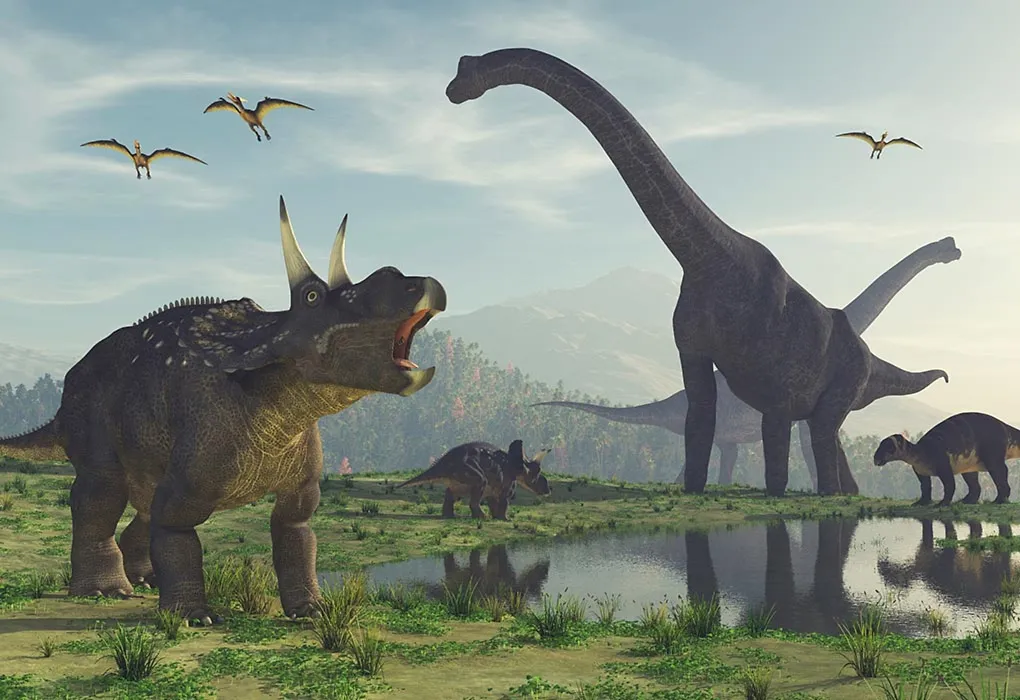
2. Saurischia
Saurischia translates to ‘lizard-hipped’ in English – this is because the hips resembled those of a lizard. This group mainly included the more famous dinos, included the meat eaters always on the fore – T-rex was one of these! They walked on two legs, had short arms, a powerful tail and a long jaw. Other examples include the Allosaurus, Oviraptor and the likes (4).
The Saurischia is also the precursor to the birds, which developed from this group – the avian dinosaurs are the only one to survive the extinction event that took place.
What Are the Key Characteristics of Dinosaurs?
Dinosaurs were an extremely varied group of creatures, with some of them larger than the biggest elephant today, with over 1000 trillion cells in them while some others extremely small, similar to the size of a chicken. Some of the dinos could fly, and some even had feathers.
The cold-blooded dinosaurs actually reproduced by laying eggs, but some other warm-blooded ones around this time may have been giving birth already. Some dinos were herbivores, some omnivores and some others pure carnivores like the T-rex. The carnivores would eat other dinosaurs and small mammals when they were hunting.
In Which Era Did Dinosaurs Live?
The ‘Age of Reptiles’, or the Mesozoic Era was when the dinosaurs lived. It started around 252 million years ago and lasted until 66 million years ago. The era is divided into three periods – the Triassic, Jurassic and Cretaceous.
How and Why Did Dinosaur Become Extinct?
The reason as to how dinosaurs vanished from the earth has still not been found and is very much a topic of heated debate. All we know is that a worldwide extinction event happened around 100 million years ago, which lead to their extinction. The most probable cause is a meteor collision, which might have caused the sun to be blocked out due to dust in the air. This would have resulted in the temperatures plunging, making it too cold for dinosaurs to survive.
Fun Facts About Dinosaurs for Kids
Dinosaurs were full of surprises, and there’s so much about them that will make you say “Wow!” Get ready to learn some fun and amazing dino facts that will blow your mind!
- The study of ancient life is called Palaeontology, and a scientist who studies that is called a palaeontologist.
- The word “dinosaur” means “terrible lizard”, but dinosaurs weren’t really lizards; they were their own special group of animals.
- All the knowledge we have about dinosaurs have been obtained from their fossils.
- Fossils of dinosaurs have been found in all continents, including Antarctica.
- However, the presence of fossils in Antarctica does not mean that dinosaurs lived there – at that time, the earth had a single super landmass called Pangaea, which consisted of all the continents we have today.
- Even T-Rex may have had feathers on their body.
- The first dinosaur formally named was the Megalosaurus, in 1824 (5).
- The largest dinosaurs, Brachiosaurus and Apatosaurus were actually plant-eaters.
- Some dinosaurs had natural weapons on their body, like the three horns atop the Triceratops’ head shield and spikes on the tail of the Stegosaurus.
- Pterodactyls are actually not dinosaurs, but other flying reptiles which lived in the same age (6).
- Theropods are the type of dinosaurs which are the ancestors of birds.
- Some dinosaurs, like Ankylosaurus, had armour plates and a clubbed tail for protection (7).
- Not all dinosaurs were scary, many were gentle giants that only ate plants, like the Iguanodon (8).
FAQs
1. Did all dinosaurs live at the same time?
No, different types of dinosaurs lived during different periods. For example, Stegosaurus lived during the Jurassic Period, while T. rex came much later during the Cretaceous Period.
2. How fast could dinosaurs run?
Some dinosaurs, like the small Velociraptor, could run very fast, up to 40 miles per hour! That’s faster than many modern animals (9).
3. What was the smartest dinosaur?
The Troodon is believed to be one of the smartest dinosaurs. It had a big brain for its size and likely used its intelligence to hunt and survive (10).
Studying about dinosaurs can be fun, and so can dinosaur fossil facts for kids. So make sure to teach your children about these when they are old enough to understand!
References/Resources:
1. Encyclopedia Britannica – dinosaur
2. Natural History Museum – Dinosauria: How the ‘terrible lizards’ got their name
3. Encyclopedia Britannica – ornithischian
4. Encyclopedia Britannica – saurischian
5. Natural History Museum – Megalosaurus
6. Encyclopedia Britannica – pterodactyl
7. Encyclopedia Britannica – Ankylosaurus
8. Encyclopedia Britannica – Iguanodon
9. Natural History Museum – Vicious Velociraptor: tales of a turkey-sized dinosaur
Also Read:
Facts of Fox for Children
Facts about Goat for Kids
Facts about Reptiles for Kids
Interesting Facts about Polar Bear for Kids
Facts and Information about Spiders for Kids
Amazing facts About Blue Whale for Children
Was This Article Helpful?
Parenting is a huge responsibility, for you as a caregiver, but also for us as a parenting content platform. We understand that and take our responsibility of creating credible content seriously. FirstCry Parenting articles are written and published only after extensive research using factually sound references to deliver quality content that is accurate, validated by experts, and completely reliable. To understand how we go about creating content that is credible, read our editorial policy here.






